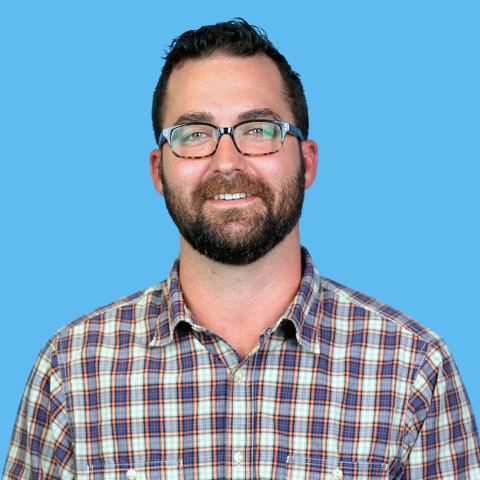
Newsy is at an interesting crossroads.
The company, which was acquired by E.W. Scripps in 2014, started in 2008 as a digital news channel. Then in late 2017 it bought cable subscribers and suddenly found itself in much different world.
Newsy reaches more than 10 million U.S. cable households, primarily on Comcast and Cox. Newsy CEO Blake Sabatinelli said that number could go up soon. But as Newsy’s cable audience grows, so do the company’s challenges taking advertising technology and data approaches built for a digital environment and translate them to a more traditional ecosystem.
“You can do true digital ad replacement in a seamless manner on a digital platform,” Sabatinelli said. But he said that in the more traditional space, there still isn’t a consensus on how to do that. There are a lot of companies that are starting to do cross-platform measurement and putting together different attribution models and real-time analytics solutions for linear TV. But no single company has enough scale to execute an industrywide strategy, he said.
“The big difference when you’re moving into the more traditional ecosystem is that you’re having to cobble together a solution much more intentionally than you would on digital where this stuff is tried and true and the technology works flawlessly,” Sabatinelli said.
FierceVideo sat down with Sabatinelli at the NAB Show in Las Vegas to talk about why addressable advertising is still a challenge on cable and how programming decisions evolve when you go to cable from digital.
FierceVideo: In cable, you deal with different providers, different hardware and different managed networks. Is that why it’s hard to get a consensus?
Sabatinelli: It is, but it’s early days in this kind of technology. I think if you look from the MVPD perspective, they have access and the ability to do ad replacement and insertion pretty easily. But as a publisher you don’t necessarily get the opportunity to play in that ecosystem and that’s what is very different about digital versus a traditional media ecosystem. Google will let me play pretty much anywhere that I want to play but an MVPD might not because there may be proprietary information that they have and don’t necessarily want to give up. It makes it a much more challenging ecosystem but it also makes it fun because you have an opportunity to see if you can find a way to make all this work, and try to make it work before the market really gets there.
FierceVideo: Are you actively working with pay-TV providers to build up an addressable advertising platform?
Sabatinelli: We have discussions going with some of our pay TV partners. We also have a lot of discussions going with the people who have access to the set-top boxes or the TVs themselves. In some cases it’s the manufacturers or in some cases it’s a third party that can allow us to do digital ad replacement relatively easily. Then we can start to think about how we build a CPM-based model across the entirety of our business. As we try to scale up both sides of the business, our advertisers are coming to us and they’re not necessarily saying they want to buy on cable or buy on OTT; they just want to buy TV. And we’re a multiplatform TV business so ultimately we’re looking at the way we can best service our advertisers.
FierceVideo: For a younger demo I would imagine it skews more toward the digital side of things.
Sabatinelli: Absolutely. If you look at our demo as a whole, we’ve been really encouraged early on. We’ve only been live in any really capacity on cable, in 10 million plus homes, for the last five or six months. We’re rapidly accelerating the distribution footprint. We’ll be in far more homes than we are today, even within the next 30 days. As we’ve been learning our way through, what we’ve found is we’re getting tune in from all the right places, like Adult Swim, E!, [Paramount Network] and other younger skewing channels. So yeah, our digital arm is younger. But as long as we’re reaching that news consumer who’s somewhere between my age, which is 36, and my brother’s age, which is 45, we’re doing a pretty good job on cable.
FierceVideo: If we could go back to data for a moment, how big of a role does it play for Newsy in terms of optimizing programming for your audience?
Sabatinelli: One of the things that we’re trying to do is replicate what we do as far as data intelligence goes on OTT and bring it to cable. If you would have asked this question three years ago, the amount of real-time information that you had available to you on the cable side is far less than what you have now. Now you have platforms like Samba and Gracenote, and what these allow us to do is take that Google analytics methodology that you have available to you and bring it to linear television and programming.
We also have a home-brewed CMS and what we’d really like to do is take what you would normally do with a Chartbeat leaderboard or something along those lines on the digital side, and bring that to your traditional content stacking ecosystem for a newscast. That way we know that if three stories on a particular topic, based on historical data, would generally perform better, then we give an inclination that it might be a better programming decision going along. Conversely, we might look at the negative side of it. If you put three stories about the President together, and historically that has had a negative impact on viewership based on the real-time data we have available to us, then we can make a recommendation of a different way to stack the show. We’re really trying to take those digital-first concepts and bring it to cable.